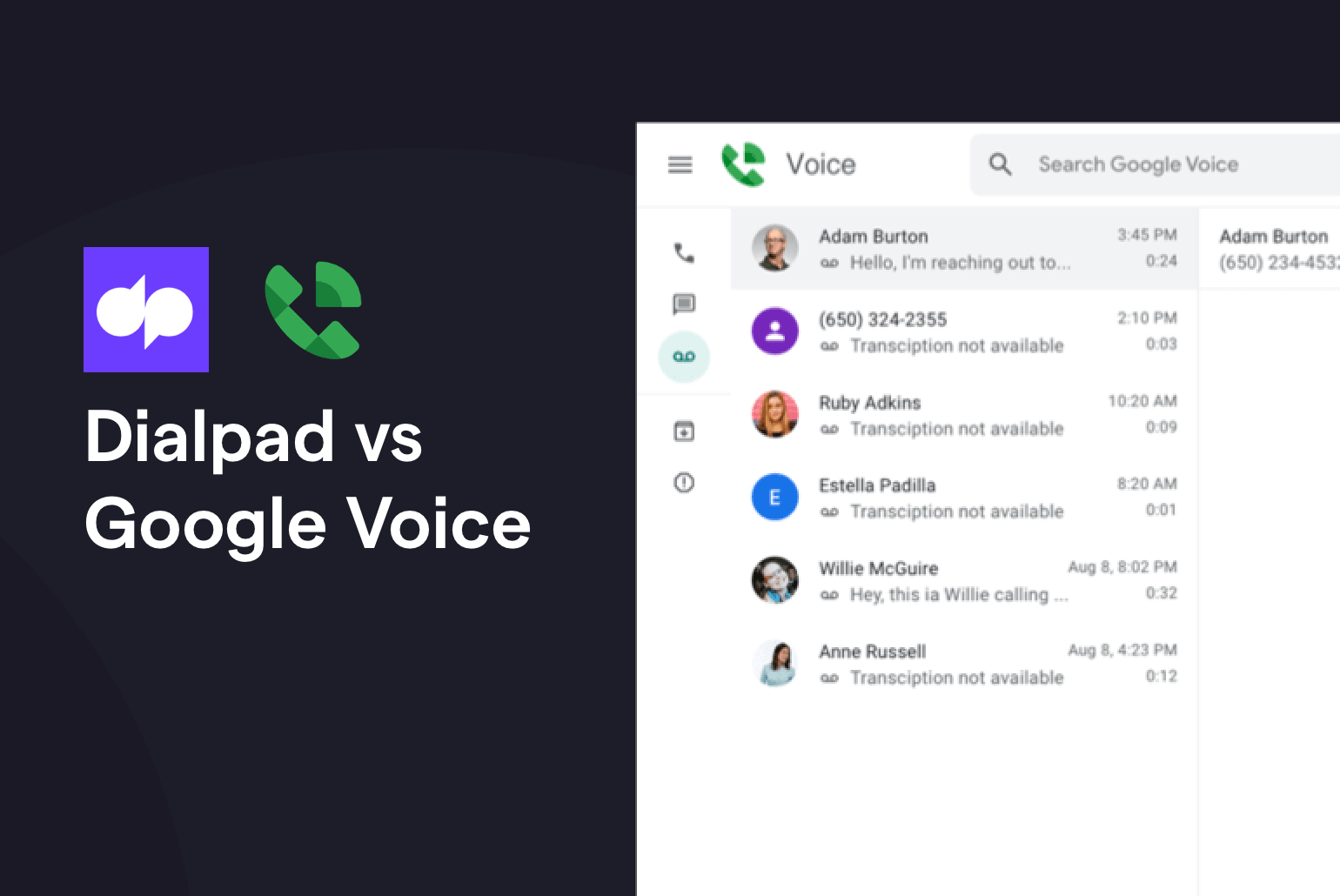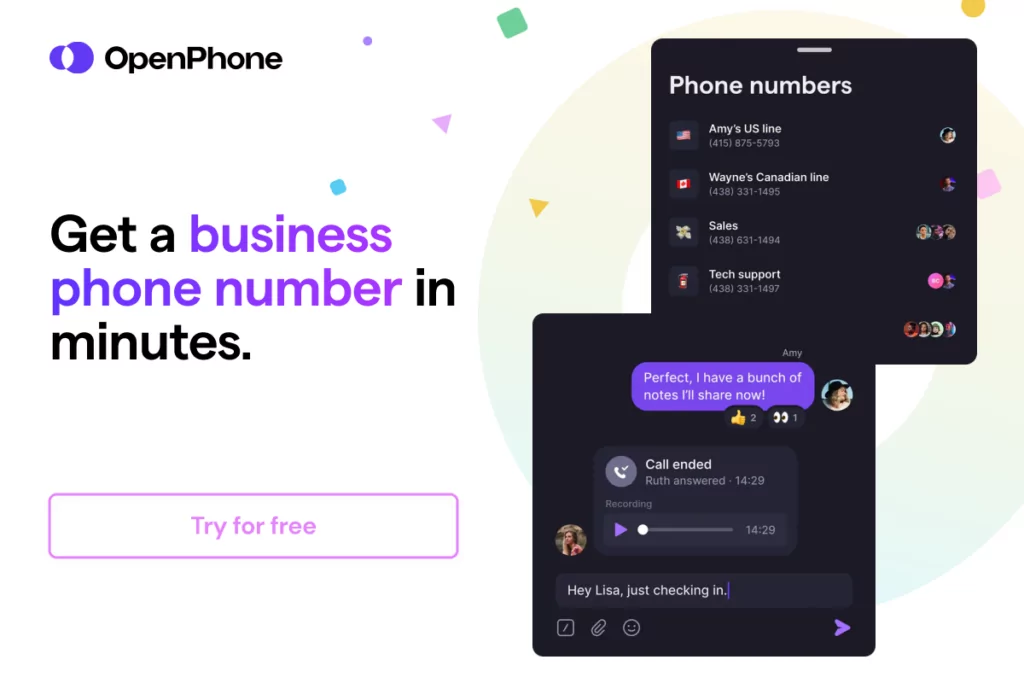When you’re researching business VoIP systems, you’ll find options for everything from a full-fledged contact center to a cheap second phone number that may or may not play nicely with your other apps and tools.
It can be a confusing endeavor to find the VoIP service with the right features for your business at a price that’s affordable to you.
That’s why we’re breaking down Dialpad vs Google Voice. We’ll help you see how these phone service providers can (or can’t) meet your business needs.
We’ll also introduce you to a VoIP provider you may not have heard of, but just might love.
Dialpad vs Google Voice: How these business phone systems compare
Dialpad is an expansive VoIP service with features and products to help you with everything from your small business communications to call management for a large-scale contact center.
Google Voice, on the other hand, fits into Google’s suite of business tools. It has fewer advanced features, but Google aficionados may find it the right fit for their current needs.
Let’s take a look at how Dialpad vs Google Voice compare on pricing, features, and integrations.
1. Pricing: Which gives you the most bang for your buck?
Winner: Dialpad
We’ll put it simply: both Dialpad and Google Voice have confusing pricing structures.
If you were drawn to Google Voice for its free version, you’ll quickly learn you need to pay for pretty much anything more complicated than a voice call.
To access business features on Google Voice, you’ll need an active Google Workspace account and a subscription to Google Voice for Google Workspace. All told you’ll end up spending at least $16 per month per user on Google Voice ($6 per month for the Google Workspace account plus however much you pay for the Google Voice plan).
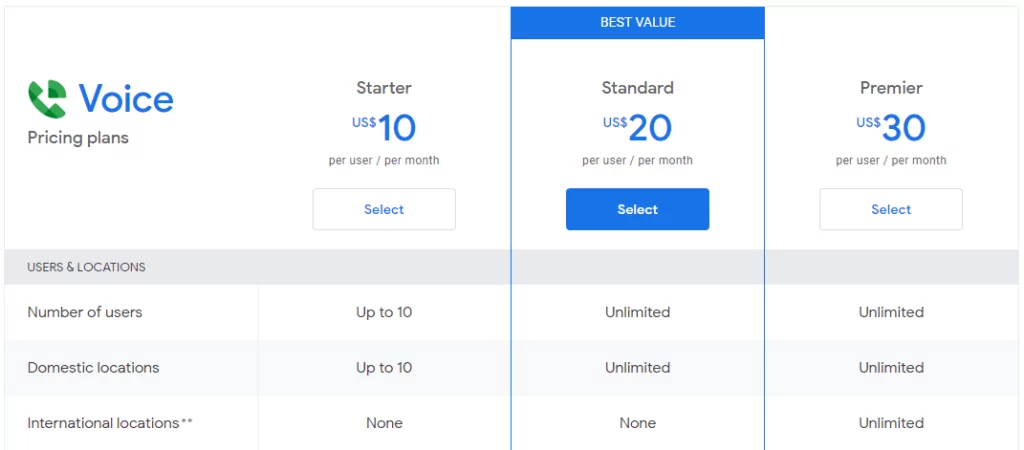
If you need to add more than 10 users to your business phone system, your Google Voice subscription gets even pricier. To add your 11th user, you’ll need to upgrade to the Pro plan, bringing your monthly cost to $26 per user (this amount includes having an active Workspace plan).
It’s not exactly the free tool you might have thought it was.
Dialpad is only marginally more straightforward in its pricing. While you’ll only have to subscribe directly to Dialpad, you’ll pay a different amount depending on whether you’re billed annually or monthly.
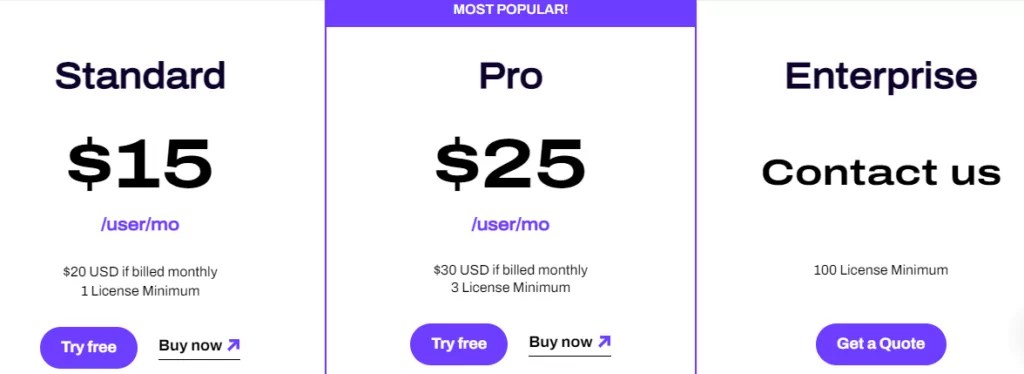
Dialpad doesn’t have user limits like Google Voice, but it does have license minimums for its higher-tier plans. To access Pro features like additional phone numbers, CRM integrations, or multiple office locations, you’ll have to purchase at least three licenses and pay $25 per user per month.
If you’re a one- or two-person operation, that license minimum could make Dialpad prohibitively costly. Your baseline monthly cost to get more than one phone number or connect your most important business tools will run at least $75 per month.
2. Features: Does Google Voice or Dialpad provide more business-friendly features?
Winner: Dialpad
Comparing Dialpad vs Google Voice, Dialpad is chock full of useful features. However, you’ll have to pay extra for some of the most important ones. For instance, you’ll pay an additional $17 per month to access a toll-free number. (It’s just $15 extra per month if you pay annually.)
On top of that, if you have a toll-free number, you’ll have to pay $0.02 per minute for every incoming call within the United States. It’s not exactly a simple and affordable solution for toll-free numbers.
You’ll find limits on other features too. Many important ones, like international texting and auto-replies, are only available on Dialpad’s Pro plan, which requires you to pay for at least three licenses.
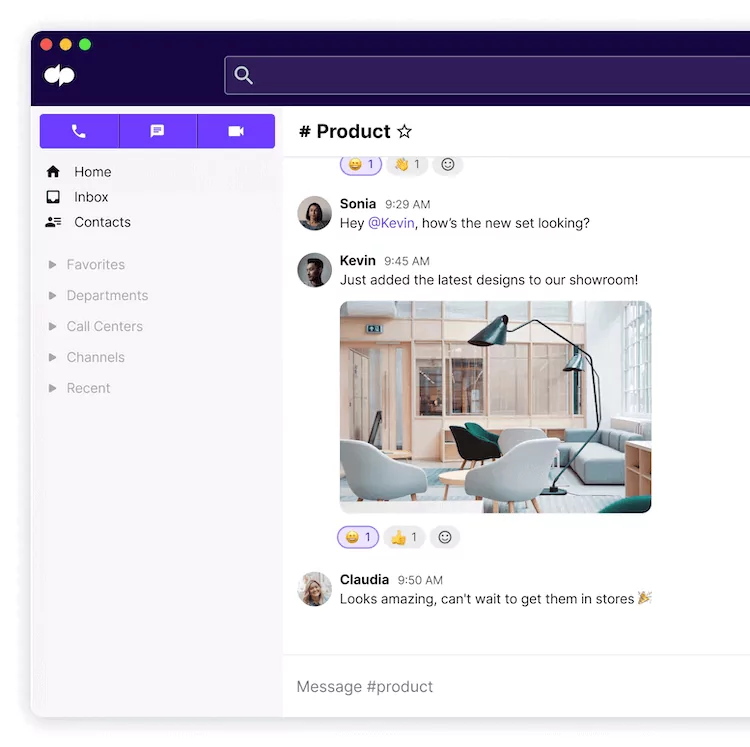
The Standard plan has its limits too. You only get one phone number ported over for free, and you can only share phone numbers via ring group with up to three people.
The business phone features on Google Voice for Google Workspace are on the simpler side. Voicemail transcription and call forwarding come on the base plan, but you’ll need to upgrade for features like an auto-attendant and ring groups.
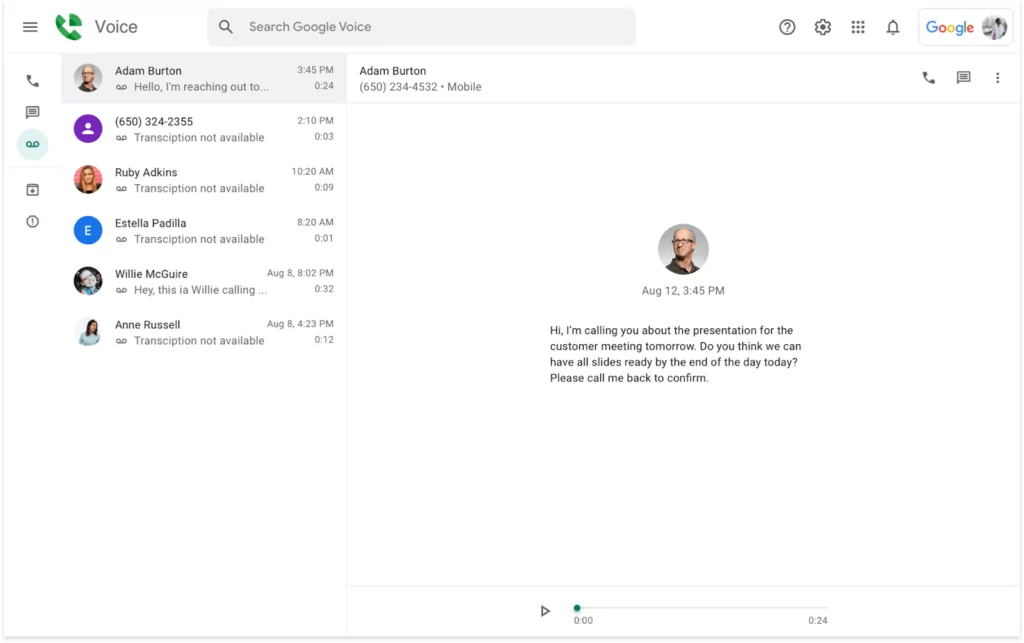
Some key features just aren’t available on Google Voice. You won’t find any options for call recording or auto-replies, making it difficult to review past conversations and respond instantly to new ones. Google Voice also lacks collaboration tools to help you get insight from your team on ongoing customer communication.
Lastly, if a toll-free number is a key part of your business needs, you’ll need to pass on Google Voice. Toll-free numbers aren’t available through Google Voice.
3. Integrations: For Dialpad vs Google Voice, which platform offers more ways to streamline your communication?
Winner: Dialpad
When it comes to integrating your other tools into Google Voice vs Dialpad, Dialpad offers far more options. You can integrate with Slack, Salesforce, Zendesk, and a lot more.
That is, as long as you’re on the Pro plan — the one where you’ll pay $75 per month minimum since you have to purchase at least three licenses. On Dialpad’s Standard plan, you can only connect the G Suite and Office 365. It’s a pricey option for connecting your essential business tools.
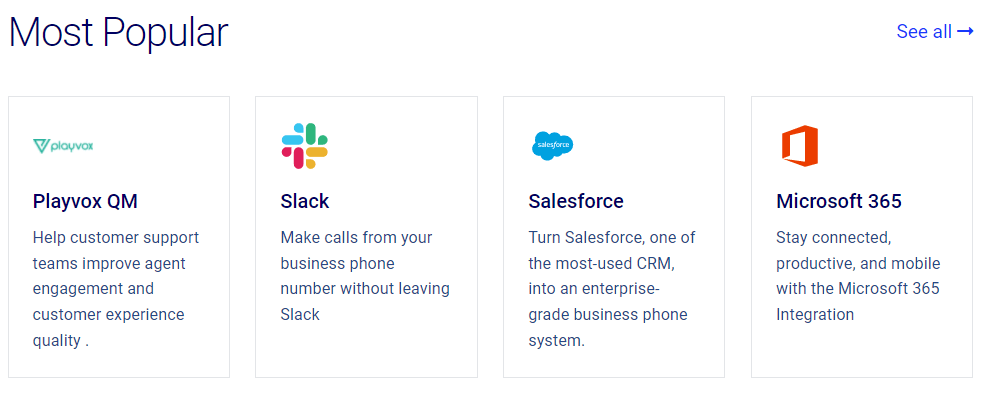
Google Voice only integrates with other Google Workspace apps. That includes Gmail, Drive, Calendar, and Meet, along with a few others. If you work almost exclusively in Google Workspace, this option could make a lot of sense for you. Keep in mind though, Google Voice still lacks some important phone features.
Dialpad vs Google Voice vs OpenPhone: The third solution you didn’t know you needed
Both Dialpad and Google Voice have their use cases, but if you’re looking for a straightforward and affordable solution for your business communications, we have another option in mind.
OpenPhone is a business phone system that makes it easy for businesses to communicate, collaborate, and scale. Let’s take a closer look at how OpenPhone outdoes the competition.
1. Get the most flexible plans
OpenPhone keeps its pricing simple and straightforward. You’ll pay just $15 per user per month — you won’t be forced to upgrade to a more expensive plan just because your team expands.
You can upgrade to OpenPhone’s Business plan for more features, like AI call summaries, phone menus, analytics, and call transfer.
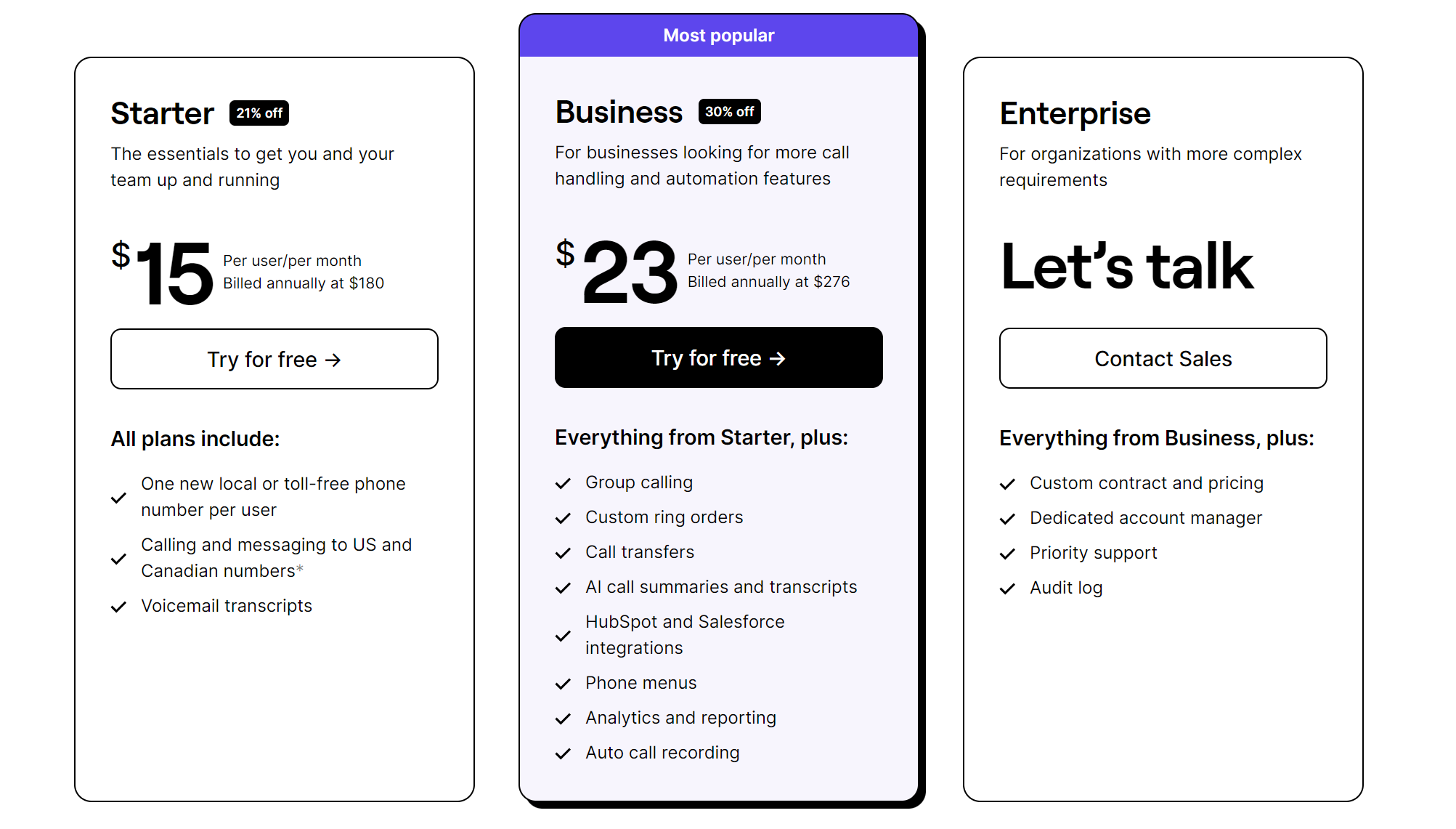
We make all our pricing transparent, so you can always see add-on fees or the international rates for calls.
Most of the time, you won’t run into add-on fees in OpenPhone. You’ll pay a small fee for extra phone numbers per user, international calls, or automated text messages, but that’s it. Features like toll-free numbers or porting over your existing number come included with your base plan.
2. Collaborate easily on communication
OpenPhone offers shared phone numbers in a team inbox to make it easier than ever for your team to align on how to communicate with customers.
Everyone on your team can see all the phone calls and SMS messages that come into the inbox. You can see who is on a call or handling communication in real-time.
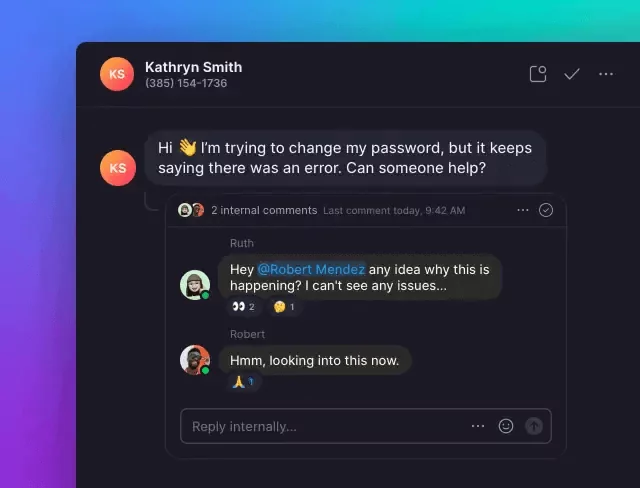
OpenPhone’s collaboration features feel just like any other team messaging app. You can leave feedback on client communication or tag in a colleague with threads and mentions to keep work moving and make clients happy.
3. Listen back to call recordings to improve responses
It’s easy to record and playback your client calls to improve the quality of your responses and customer support on OpenPhone.
Call recording comes standard on every plan, so you’ll never have to pay extra to access or use this feature. You can even configure your OpenPhone account to automatically record all of your calls by default. It’s an incredibly useful business tool that improves both employee and customer outcomes.
4. Save time with snippets and auto-replies
OpenPhone gives you dozens of features to help you save time and make your life easier. Our favorite? Snippets.
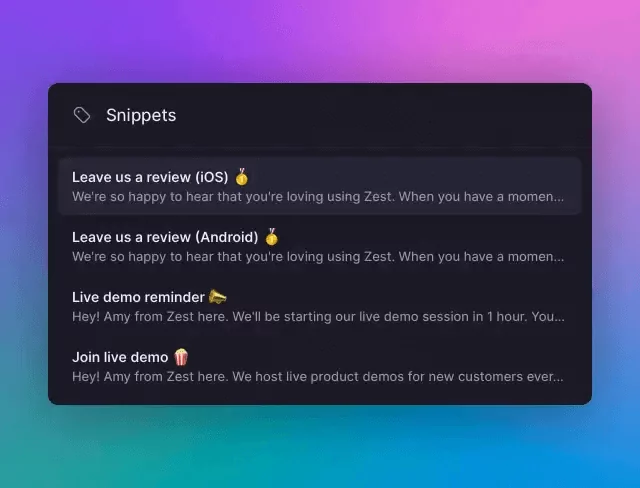
With snippets, you can save commonly used texts in your shared inbox to use over and over. You can answer frequently asked questions, provide important product information, or let customers know your plans and pricing.
You won’t have to type repetitive messages ever again. At the same time, you’ll stay on brand and on message no matter who on your team is talking to your customers.
Auto-replies can also help you save time and communicate better. Like snippets, auto-replies are pre-written text messages saved in your shared inbox. These messages are set to respond to customers when they take a specific action, like sending a text message or leaving a voicemail.
Most OpenPhone users leverage auto-replies to increase their responsiveness to clients. They might send an automated follow-up text after a missed call to let the customer know when they can expect to hear back.
You can expand your messaging functionality even further by connecting the business apps you already use to OpenPhone. On the Starter plan, you can integrate Gmail, Slack, and Zapier, which gives you the ability to connect even more tools. On the Business plan, you can also take advantage of the Hubspot CRM integration.
Compare OpenPhone vs Dialpad vs Google Voice
Check out this chart comparing OpenPhone vs Dialpad vs Google Voice to see which provider offers the features you need.
| OpenPhone | Dialpad | Google Voice | |
|---|---|---|---|
| Pricing | Starts at $15 per month per user | Starts at $15 per month per user | Starts at $10 per month per user, plus Workspace subscription |
| Unlimited calling to US & Canada | ✓ | ✓ | Unlimited calls to Canada from US only |
| SMS/MMS to US & Canada | ✓ | For US & Canadian customers only | US customers only |
| Voicemail transcriptions | ✓ | ✓ | ✓ |
| Set business hours | ✓ | ✓ | x |
| Additional phone numbers | $5 per month per number | Requires upgrade | x |
| Call recording | ✓ | ✓ | x |
| Shared phone numbers | ✓ | ✓ | Requires upgrade |
| Auto-attendant (virtual receptionist) | ✓ | ✓ | Requires upgrade |
| Auto-replies | ✓ | Requires upgrade | x |
| Slack integration | ✓ | Requires upgrade | x |
| Zapier integration | ✓ | Requires upgrade | x |
| CRM integration | Requires upgrade | Requires upgrade | x |
| iOS and Android apps | ✓ | ✓ | ✓ |
| Browser app | ✓ | Google Chrome only | ✓ |
| Desktop apps | ✓ | ✓ | x |
Move past Dialpad vs Google to get the flexibility you need
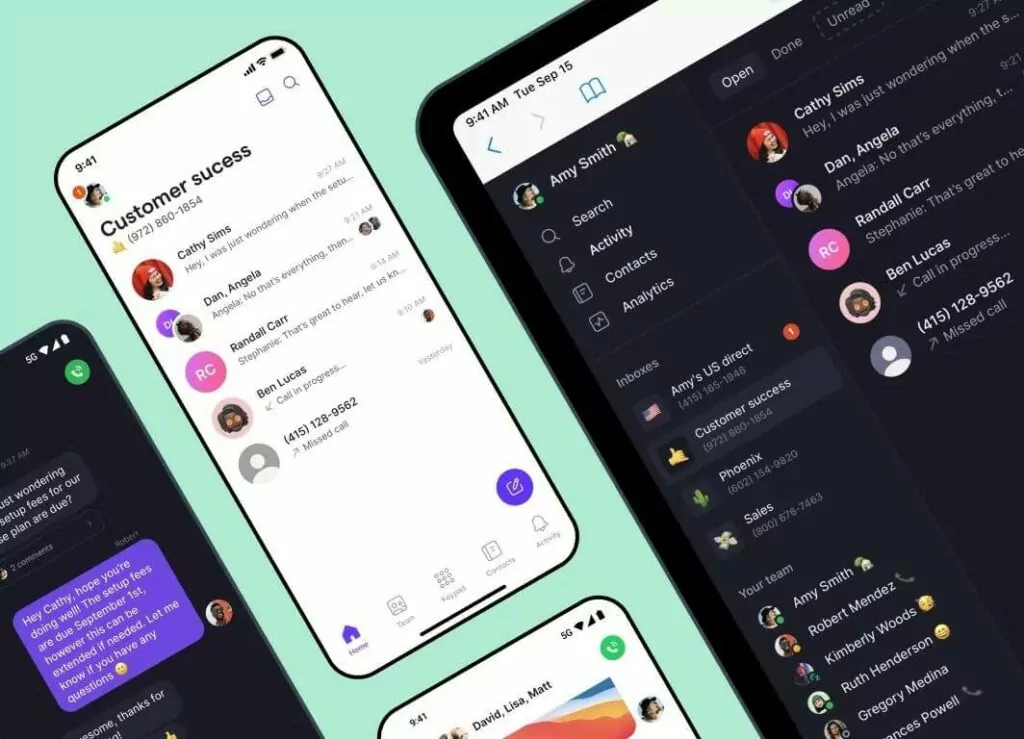
Dialpad has some impressive VoIP features, and it’s easy to be enticed by the likes of Google Voice. But if you want a flexible, affordable VoIP phone service that doesn’t impose arbitrary restrictions, OpenPhone might be the right choice for you.
With streamlined pricing plans packed full of features even on the lowest tier, OpenPhone is a game changer for any small business or startup looking to improve their customer communications. Start your free trial of OpenPhone today.
